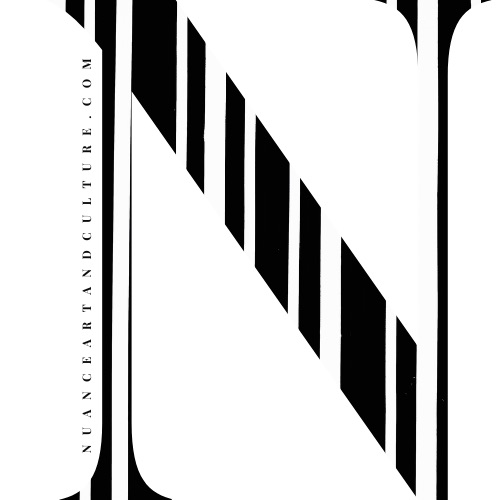How do ethnic minority artists join the mainstream contemporary Chinese art discourse?
Soft-opened on Nov 6th, 2021, scheduled to run through Apr 6th, 2022, the Chengdu Biennale is held at Chengdu Tianfu Art Park, consisting in two newly-established museums, each iconic as urban architecture. Chengdu Tianfu Art Museum and Chengdu Museum of Contemporary Art. As a large-scale art exhibition, the Chengdu Biennale consists of 8 sectional exhibitions with different themes of exhibition, one international museum director conference, and more than ten parallel exhibitions. The 8 exhibition themes are named as follows: “Polymorphic Co-Existence”, “Urban Co-Habitation”, “Technological Co-Respondence”, “Zeitgeist Co-Evolution”, “Ecological Co-Development”, “Craft Co-Operation”, “Ethnic Co-creation”, and “Artistic Co-Inspiration”.
Among the 8 themes, one theme stands out — “Ethnic Co-creation”, as Sichuan, the province where Chengdu is located, shares a border with Tibet and thus shares a long history of cultural encounter and communication. As a result, Chengdu has become the hub of multi-ethnic groups and diverse cultural identities. Artists featured in the exhibition come from diverse cultural backgrounds, examining cultural exchange through artistic approach which negotiate with history in developing contexts of modernization and migration. These artworks tend to go unmentioned, disregarded, generally underrepresented in the mainstream discourse of contemporary Chinese art. The Chengdu Biennale aims to bring these artworks into the spotlight.
How do the artworks in “Ethnic Co-creation” represent and negotiate with regional history in Sichuan and Tibet?
The artists address the changing landscape of Tibet from historical, environmental, and cultural perspectives. The history is encapsulated by Zhang Huan in a conceptual model of a monumental palace (Spirits Temple (2021)), which is inspired by Dunhuang Mogao Caves and the Potala Palace. For Zhang, the conceived architecture harbors both spirituality and mortality. While the palace’s facade consists of images of Chinese and Russian historical figures, the palace is also designed in the shape of a huge coffin. The conceived palace thus represents Zhang’s interpretation of history, which rests in between the status of haunting spirits and historical dust.

Zhang Huan, Spirits Temple (2021)
In discussion of environmental and cultural history, some artists intend to imprint their memories of the land into their physical body by performing in the changing landscape. In Liu Shang-ying’s Wasteland Plan No.21, Liu addresses environmental changes in the Tibetan landscape through the means of performance and painting. Laying the canvas on the wasteland, the artist interacts with the landscape while leaving the trace on the canvas, crystallizing his memories and perception of the barren land into the paint on the canvas surface.

Liu Shang-ying, Wasteland Plan No.21 (2019)
In The Last Spring Ploughing, Artist Penpa from Lhasa discusses the expansion of city and land acquisition (tudi zhengyong土地征用) through performance and video installation. Leading his family to document plowing the land one last time. They performed a farewell ritual to commemorate the family’s farmland, whose existence and absence serve as a historical testimony to the changes in the family and in the Tibetan landscape. In another performance, Moving to the Mountain (2013), Penpa moved part of his home to a ruin in the mountain, which was said to have been a left from the war with the Dzungar. Inhabiting the roofless ruin, the absurdity of Penpa’s performance puts questions to cultural rupture, urban housing, and site-specific histories.

Penpa, The Last Spring Ploughing

Penpa, Moving to the Mountain
Photographer Yang Yue-luan also addresses modernization in his works Tibetan Scenery (Xizang fengjing 西藏风景). No longer separable from modern infrastructure, the landscape appears to be ominous, disrupted, and vulnerable.

Yang Yue-luan, Tibetan Scenery (Xizang fengjing 西藏风景)
Other artists such as Bma Zhaxi巴马扎西 and De Zhen德珍&Ciren Langjie次仁朗杰 have portrayed Tibet’s natural and cultural landscape through distinct visual language and affective interpretation. Experimenting with traditional ink painting, 巴玛扎西’s paintings convey an eerie, disruptive, but intriguing representation of his hometown’s impression. With sentiments towards the disappearing culture, 德珍&次仁朗杰 delineates a fantastical, surreal landscape in their paintings. The portrayal of a strange and fantastical landscape points towards the changes and urbanization that the Tibetan landscape has undergone throughout the years.

Bma Zhaxi,Hometown Impressions
(Jiaxiang yinxiang 家乡印象)

De Zhen & Ciren Langjie,
Herd and guard the frontier
(Fangmu Shouubianjiang 放牧守边疆)


Recent Comments